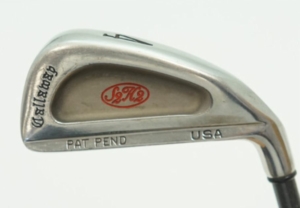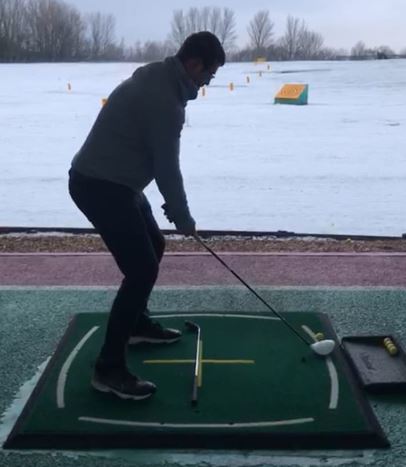Are Callaway S2H2 Irons Still Good? Are They Forgiving For High Handicappers?
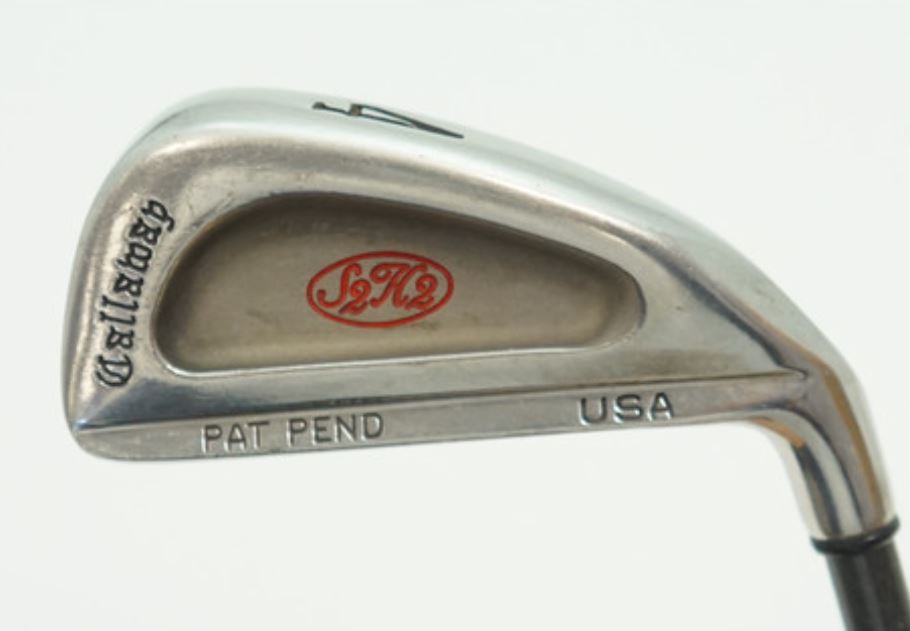
“The last Callaway S2H2 irons produced hit shelves in 1994.”
So we’re talking about irons that are at best, nearly 30 years old.
With all that has changed in golf tech since then, it’s hard to imagine that the Callaway S2H2 irons could provide any value to today’s high handicappers.
But you would be surprised. I’ve tested a lot of 20+ year old clubs in my day and some of them have completely blown me away.
Were the Callaway S2H2’s that type of set? Find out in the following review.
Are Callaway S2H2 Irons Still Good?
“Today, Callaway is a household name; but it didn’t always used to be that way.”
Again, the latest version of these irons were released in 1994. Back then, Callaway wasn’t a go-to brand for golfers.
They were still being overshadowed by the likes of Titleist and even Wilson. But the Callaway S2H2 irons represented a kind of turning point for the company.
S2H2 stands for Short Straight Hollow Hosel. The hosel of these irons were specially engineered to be shorter, lighter and to be hollow.
This saves weight which is then placed low in the club head to promote higher launch and spin numbers. The Callaway S2H2 irons also came stock with titanium shafts.
The 9-iron of this set checks in at 43°. Combined with the low CG, the weak lofts make for high trajectory. The Callaway S2H2 irons are cavity backs but the cavities aren’t enormous.
In fact, the Callaway S2H2 irons actually have a very clean look at address. The cavity undercut doesn’t stick out at you behind the ball and the top lines are very thin.
As cavity back irons, there is natural perimeter weighting. Overall, I actually like the looks of these irons at address – not so much in the bag though.
The club number is on the soles and the “Pat Pend USA” lettering sort of mars the look of the backside of the irons.
The feel of these irons also isn’t ideal. They feel sort of hard even when you nail the sweet spot. But the looks and feel of these irons don’t really affect performance.
If you can get past the look and feel, you will find that these are actually still good irons.
Are the Callaway S2H2 Irons Forgiving for High Handicappers?
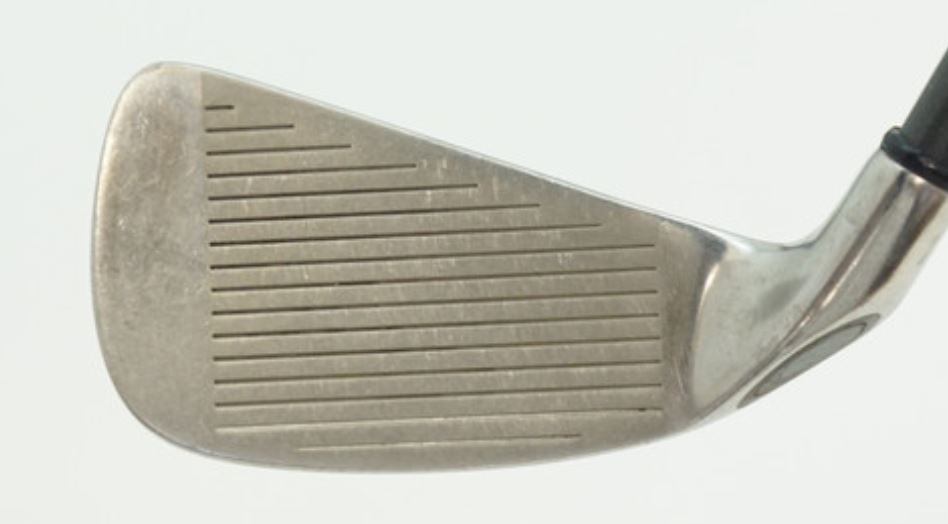
“The Callaway S2H2 irons were surprisingly forgiving.”
When I got the Callaway S2H2 irons in for testing, the first thing that struck me was the compact look.
The Callaway S2H2 irons don’t have very long blades. And while the face profile is relatively deep, the heads aren’t oversized.
So I thought these irons would be hard to hit if I opened up my swing and tried to mis-hit.
That wasn’t really the case. When I swung outside of myself I still made solid contact and produced my typical baby draw.
The Callaway S2H2 irons won’t be as forgiving as say, modern Big Bertha irons; but there is certainly enough forgiveness for high handicappers to work with here.
The CG is nice and low and the shaft goes all the way through to the sole.
The thru-sole shaft gave these irons nice stability and made it easier for me to control the club head on more aggressive swings.
And when I took a more natural shot, I was hitting the sweet spot almost every time.
If you are shanking the ball consistently, the Callaway S2H2 irons probably won’t help you.
But if you’ve got a few seasons under your belt, I think you could make the Callaway S2H2 irons work pretty well for yourself.
Callaway S2H2 Vs Callaway N415 Irons
“The Callaway N415 are more traditional-looking irons and incorporate the Speed Frame to increase forgiveness.”
The N415 irons have a deeper cavity undercut than the Callaway S2H2 irons and they feel a bit softer too.
The launch is brought down a bit with stronger lofts. I liked the consistency of the N415 irons. The ball speed I was getting on mis-hits was very similar to that of perfect strikes.
Overall, I think the more recent Callaway N415 irons have a bit more to offer high and mid handicappers.
Callaway S2H2 First Impressions
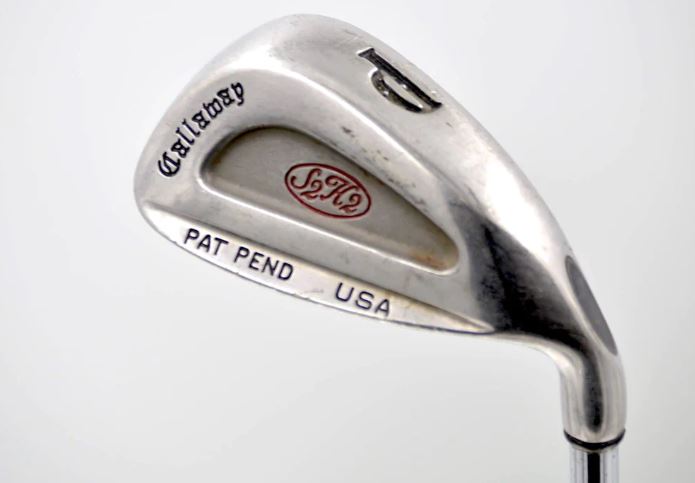
“My first thought when I laid eyes on the Callaway S2H2 irons was that they looked outdated.”
They just have the aesthetics of a bygone era in golf club manufacturing. But the Callaway S2H2’s won me over.
They produced distance that was almost identical to my gamer irons and allowed me to shape my shot the way I wanted.
Callaway S2H2 Selling Points
- Cavity back design
- Hollow hosel
- High launch
- Good stopping power
- Thru-sole shaft
Callaway S2H2 Key Technology
Titanium Stock Shaft
Today, titanium isn’t the lightest material for a shaft. But it is very durable and isn’t much heavier than graphite.
Hollow Hosel
The hollow hosel allows for more weight to be distributed to the bottom of the club head to promote high launch and forgiveness.
Thru-Sole Shaft
Extending the shaft all the way to the sole allows for better club head control and stability on mis-hits.
Callaway S2H2 Loft & Lie
| Club | Loft (degrees) | Lie (degrees) |
| 1-iron | 16 | 56 |
| 2-iron | 18 | 56.6 |
| 3-iron | 20 | 57 |
| 4-iron | 23 | 58 |
| 5-iron | 26 | 59 |
| 6-iron | 30 | 60 |
| 7-iron | 34 | 61 |
| 8-iron | 38 | 62 |
| 9-iron | 43 | 63 |
Who Should Buy the Callaway S2H2 Irons?
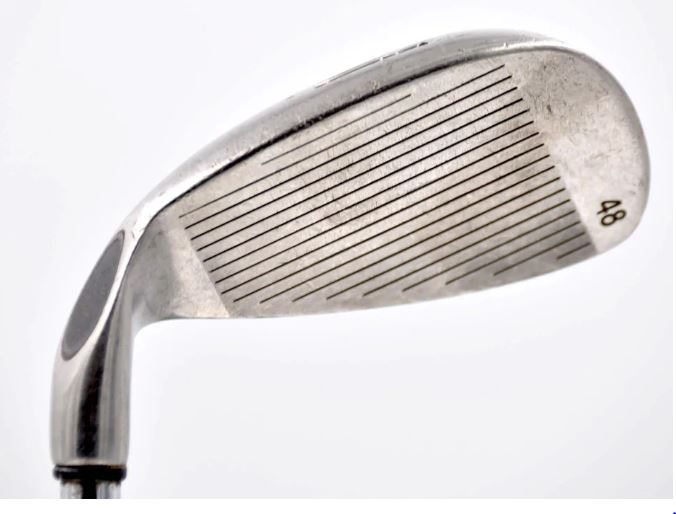
“The Callaway S2H2 irons would be a good choice for mid to high handicappers.”
If you are in the 15-24 handicap range, you can make good use of these irons.
For high handicappers, the Callaway S2H2 irons offer consistent performance and moderate forgiveness so long as you are reasonably accurate with your swing.
For mid handicappers, the Callaway S2H2’s are workable enough to affect different shot shapes.
They aren’t the longest or most forgiving Callaway irons; but considering their age and price point, they are still a good deal for the right kinds of players.
Distance: 95/100
Forgiveness: 96/100
Workability: 96/100
Overall Performance: 96/100
Value: 97/100
